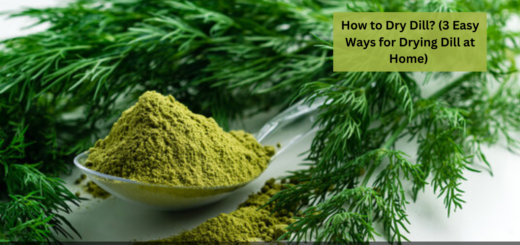What is a Pitcher Plant? – How to grow Pitcher Plant from Seeds?
Have you ever thought of growing carnivorous plants? Trust me, I am not joking; it’s quite interesting, and after reading this, you will change your mind.
Now the question is, what is a Pitcher Plant? Why is it called a carnivorous plant? How to grow the plant? Just have patience and scroll down to get all your answers.
In this informative guide, I have explained all you need to put a little effort into if you want to add this collection to your garden by reading this article from top to bottom.
Key takeaways:
- This is the best bee repeller plant like other plants to keep bees away are Mint, Basil, Marigold, Pitcher plant, Geraniums, Pennyroyal, etc which will add a more eye-catchy look to your garden.
- You might not be familiar with the plant, you can easily propagate it like you grow other plants like Kabocha squash plant.
- The propagation of this plant can be done in various ways such as through seeds, through cuttings, it depends on you.
- This is a carnivorous plant that attains the shape of a tube and even tends to trap the insects.
- The tube inside is so slippery that the insects can move out and they come inside its water, the bacteria and enzymes digest the insects.
What is a Pitcher Plant?
Pitcher plants are carnivorous plants that can digest insects. They trap the insects, indeed them by their leaves which have a vase or tube shape. It is filled with digestive fluid. The pitcher plant originated from the Nepenthaceae and Sarraceniaceae families.
Here are a few types of Pitcher Plants:
- Nepenthes alata
- Purple pitcher plant (Sarracenia purpurea)
- Cobra lily (Darlingtonia californica)
- Yellow pitcher plant (S. Flava)
- Parrot pitcher (S. psittacina)
| Plant Type: | Carnivorous flowering perennial | Flower/Foliage Color: | Red, pink, purple, green/green, pink, red, purple, white, yellow |
| Native to: | Eastern and southeastern North America, eastern Canada | Maintenance: | Moderate |
| Hardiness (USDA Zone): | 3-11, depending on species | Tolerance: | Boggy conditions, lean soil |
| Bloom Time: | Spring | Soil Type: | Sandy |
| Exposure: | Full sun | Soil pH: | 4.0-6.0 |
| Time to Maturity: | 3-4 months | Soil Drainage: | Well-draining |
| Planting Depth: | 1/8 inch (seeds), 2-3 inches (rhizomes) | Attracts: | Bees, butterflies, wasps (flowers); ants, bees, beetles, flies, gnats, mosquitoes, wasps (sap) |
| Spacing | 8-12 inches | Companion Planting: | Bamboo, butterwort, cinnamon fern, elderberry, holly, iris, lady slipper orchid, mint, mountain bog gentian, pogonia, rose mallow, golden-scaled male fern, southern lady fern, southern shield fern, sundew, tuberous grass pink, Venus flytrap |
| Height: | 6-36 inches, depending on variety | Uses: | Wetland naturalizing, bog garden, insect control, water feature planting, habitat replenishment |
| Spread: | 8-36 inches, depending on variety | Family: | Sarraceniaceae |
| Water Needs: | High | Genus: | Sarracenia |
| Common Pests and Diseases: | The common pests and diseases you need to protect the plant from Aphids, mealybugs, scale, slugs, snails, thrips; botrytis rot, damping off, root rot | Species: | There are some common Alata, flava, leucophylla, minor, oreophiola, psittacina, purpurea, rubra |
How to grow a Pitcher Plant from Seeds?
This plant can be grown easily you need to follow the below steps:
Step 1- You have to plant the pitcher plants in the springtime.
Step 2- Make sure to use the nutrient soil, your soil contains a mixture of sand and organic material.
Step 3- If you are planting inside the house, you need to fill a jar with a mixture that contains a low fertility mixture.
Step 4- Ensure that the pitcher plants in a place where it receives direct sunlight. Plant them in a cool area.
How to Care for a Pitcher Plant?
These plants need to be taken under supervision though they don’t need much maintenance. Let us know the crying tips for the pitcher plant so that it can remain long-lasting:
- You have to make sure that the plant is in a warm atmosphere as it grows best there. you can keep the plant indoors so that they can get that temperature for their maintenance.
- You have to add the fertilizers so that they can get nutrients from that. Whenever you see that the plant is producing pitchers anymore, then add a few drops of the fertilizer to the plant’s pitchers.
For more such plant related-articles, you may also read, What is a European Pear? – How to Grow & Care for European Pear at Home?
- You need to trim them when the leaves begin to become brown in the cold climate.
- Ensure that your plant seeks the attention of as many insects as possible so that they can feed themselves. You can even give bugs to your plants twice a year.
Growing Tips:
The following are some tips for growing pitcher plants:
- You need to plant them in a place where they get full sun and maintain boggy conditions for growing it.
- Need to use distilled water or rainwater for watering them as other sources of water do contain many nutrients and minerals.
- Never make the soil get dry and make sure to maintain the moisture.
- In case of seasonal lows below freezing, you need to move the plants indoors to protect them.
Pests and Disease:
Here are some most common pests and diseases the plant can get and how to stop them from causing major damage to the plants:
Aphids, mealybugs, scales, slugs and snails, and thrips are the common pests that you can see during the growing season and you need to control them as soon as you see any symptoms. The same is with growing any disease such as botrytis and root rot and you need to cure them using some chemicals.
Wrapping up the context
In this article, you come to know about Pitcher plants which are carnivorous plants that can digest insects. They trap the insects, indeed them by their leaves which have a vase or tube shape. It is filled with digestive fluid. I hope this article will be helpful for you all.
FAQ:
Is the pitcher plant indoors or outdoors?
Pitcher plants can be grown outdoors and indoors, but it is more suitable when planted indoors. It depends on the variety of the plant, as all tend to require their own needs.
How long do these plants live?
The pitcher plants can grow their new pitchers within themselves but if you won’t see them adding new pitchers you can add a few drops of dilute fertilizer. It can last up to a year depending on your maintenance towards them. Though the plant can remain alive for various years.
How long does it take a pitcher plant to grow a new pitcher?
You have to make sure that the plant doesn’t catch any fungus otherwise the pitchers will get destroyed. It takes approximately more than six months to produce a new pitcher.


